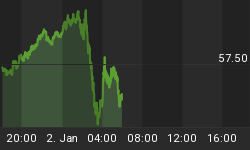The bullish case for equities is best summarized by some of the price action that I am seeing especially in the retail, home building, financial and energy sectors. Leadership provided by these sectors would be the right kind of leadership for a broad market rally.
Before I get to the charts, let me state - tongue and cheek mind you - that the equity market never goes down and don't worry the Fed has your back. This seems to be a pervasive and prevailing attitude so these are just 2 reasons to keep buying. But on a more serious note, it is very clear to me that so much of this country' s collective psyche relies upon higher stock prices. Our home values depend upon it and our 401 K's depend upon it. We cannot afford another stock market calamity. The stock market should go up and after all, why are companies in business? But prices don't go up forever.
But there other reasons for higher prices including the notion that this is a low inflationary environment, and with prices above the 40 week moving average and with trends in gold, crude oil and yields on the 10 year Treasury bond having moderated, stocks are likely to find support. See this recent article for research behind this claim.
Figure 1 is a weekly chart of the SPDR S&P Retail ETF (symbol: XRT). The pink bars on the price chart are negative divergence bars between price and a momentum oscillator; the recent cluster is inside the gray oval. As we know, negative divergence bars indicate slowing upside momentum. This has been the case over the last 4 months as XRT consolidated into a range. We know it is a trading range because of the indicator in the lower panel. This looks for statistically significant consolidations in price or decreasing volatility. Being that volatility is mean reverting, low volatility begets high volatility or range contraction begets range expansion, which is the break out.
Figure 1. XRT/ weekly
I have defined a breakout in the following manner: 1) prices must consolidate into a tight range such that the price consolidation must be statistically significant; 2) prices then must break out over 2 pivot high points. You can see this set up in figure 1, and the break out has already occurred. A weekly close back below the most recent pivot high point would be reason to exit the position or consider this a failed breakout.
A similar set up is seen in figure 2, a weekly chart of the SPDR S&P Homebuilders (symbol: XHB).
Figure 2. XHB/ weekly
A similar set up is seen in figure 3, a weekly chart of the S&P Select Financial Fund (symbol: XLF).
Figure 3. XLF/ weekly
A similar set up is seen in figure 4, a weekly chart of the United States Oil Fund (symbol: USO).
Figure 4. USO/ weekly
In this article, I have presented the bullish case. In several key sectors, prices are breaking out from prolonged consolidations. This is bullish price action, and the presence of such breakouts in these leading sectors should not be ignored. I have already presented the other side of the story in "The Bearish Case For Equities", and this is one of context. The "smart money" and "dumb money" have earned their monikers for a reason. Prices can move higher within theses parameters, but buying power on the sidelines appears to be limited.
















